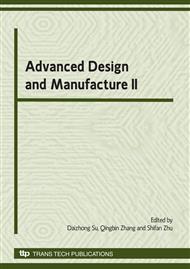p.821
p.825
p.829
p.833
p.837
p.841
p.845
p.849
p.853
Indirect Adaptive Generalized Predictive Control for an Autonomous Underwater Vehicle
Abstract:
This paper investigates the application of indirect adaptive generalized predictive control to an autonomous underwater vehicle motion. A difference controlled auto-regressive integrated moving average model is used as the multi-step predictive model. Recursive least square method based on forgetting factors is used to identify the parameters of the difference controlled auto-regressive integrated moving average model. Simulation result shows that indirect adaptive generalized predictive control algorithm can be used to control the autonomous underwater vehicle motion.
Info:
Periodical:
Pages:
837-840
Citation:
Online since:
October 2009
Authors:
Price:
Сopyright:
© 2010 Trans Tech Publications Ltd. All Rights Reserved
Share:
Citation:


